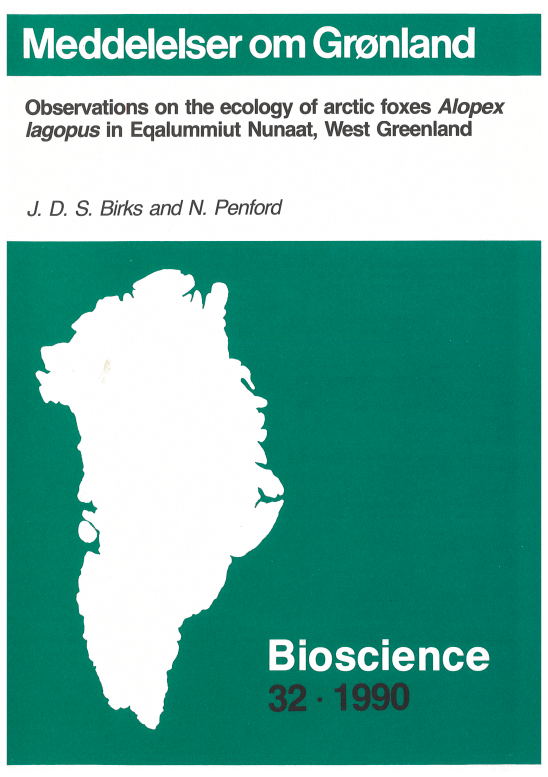Observations on the ecology of arctic foxes Alopex lagopus in Eqalummiut Nunaat, West Greenland
DOI:
https://doi.org/10.7146/mogbiosci.v32.142407Abstract
Information on diet, home range and activity of arctic foxes Alopex lagopus was collected by radio-tracking and faecal analysis in Eqalummiut Nunaat, West Greenland during spring and summer 1984. The study aimed to investigate the feeding ecology of foxes in an area where »traditional« prey such as lemmings Dicrostonyx groenlandicus and coastal food sources are absent.
Foxes were found to be heavily dependent on abundant caribou Rangifer tarandus carrion, and invertebrates found in the layer of soil above the permafrost. Scat analysis and behavioural observations showed that foxes were quick to modify their foraging to exploit seasonal changes in food availability, and preyed heavily on nesting birds, mainly passerines, when these became available. Mean home range size of two radio-tagged female foxes was 11.7 km2. It was thought that fox density was unusually high due to the abundance of caribou carrion as a result of the exceptionally long preceding winter.
The incidence of food caches was investigated and it was found that most were unearthed in June, after the thaw and just before passerine prey became abundant. White-fronted goose eggs and caribou carrion were the items most frequently found at unearthed caches.
Observations and radio-tracking revealed that foxes predominated in lowland areas, generally avoiding plateau areas above 500 m, where passerines and caribou carrion were scarce. Foxes were found 10 be 50% more numerous on the study area in 1984 than in 1979, and this was felt to be related to differences in the availability of caribou carrion. Foxes were found to be major predators of the eggs of Greenland White-fronted geese.

Downloads
Published
Issue
Section
License
Coypyright by the authors and the Commision for Scientific Research in Greenland / Danish Polar Center/Museum Tusculanum Press as indicated in the individual volumes. No parts of the publications may be reproduced in any form without the written permission by the copyright owners.

